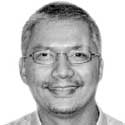
Courtside
BY Anthony L. Cuaycong

Manny Pacquiao is back in the limelight, and not simply because of his star turn in Physical: Asia. At 46, after a career that has threaded through storm and triumph, politics and sport, he has once again found himself the subject of headlines. Is a second bout with Floyd Mayweather Jr. truly in the offing? That fans are entertaining the possibility even though it is more fantasy than fact at this point underscores his continued relevance.
To be sure, there can be no questioning Pacquiao’s popularity. When he entered the set built for Physical: Asia, the latest iteration of the South Korean reality competition series, other competitors cheered. So when he broached a rematch with Mayweather in a presser in Japan, all and sundry took notice. The two boxers defined an era, and while they are now in their late 40s, their conceivable reemergence remains the stuff of box office bonanzas.
Why return? Why chase the improbable? Creditably, Pacquiao acknowledges the not inconsiderable risk. At the same time, there can be no denying that the fire remains. And so he flirts with another set-to against Mayweather, sparked by financial and cultural considerations that expand the story beyond determining winners and losers. There is the pageantry of names, the weaving of narrative, the reframing of canon. It’s as if he is saying: I remain relevant. I can still be the opening act of a new chapter.
That said, facing Mayweather again is a different proposition entirely. The vigilance of youth has gone; the stakes have altered. The audience knows the script has changed. And yet, irony does not slow Pacquiao; it invigorates him. Who knows if what he hints at may ever materialize? Then again, the narrative speaks not of one final fight, but of the endurance of identity and the persistence of ambition. There and back again is he: grounded in the past, reaching out to the future, still staking his claim.
Anthony L. Cuaycong has been writing Courtside since BusinessWorld introduced a Sports section in 1994. He is a consultant on strategic planning, operations and human resources management, corporate communications, and business development.